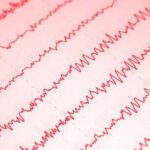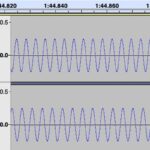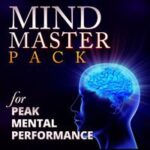When it comes to dealing with pain, whether it's a headache, a muscle ache or toothache, we're often on the lookout for ways to ease the suffering. In the world of orthodontics, where braces and appliances can sometimes cause discomfort, a unique approach involving binaural beats music has been tested to see if it can help reduce pain.
Let's dive into this study to understand what it's all about.
Study Objective
The main goal of this study was pretty straightforward: to figure out if listening to music with “binaural beats” can help reduce pain after getting braces, compared to listening to regular music or no music at all. The researchers wanted to test if this natural, non-invasive therapy could make the initial adjustment period after getting braces a bit more comfortable.
Study Methods
To do this, the researchers recruited 60 people who were about to get their braces (or as they call it, a “maxillary fixed orthodontic appliance”). These folks were split into three groups: one group (the experimental group) listened to music with binaural beats (let's call it the “BBM group”), another group listened to regular music (the “placebo group”), and the last group didn't listen to any music at all (the “control group”). They then kept an eye on how much pain everyone felt over the next seven days.
A placebo group is a control group in a scientific study designed to investigate the effects of a specific treatment or intervention. However, in the placebo group, participants are not given the actual treatment; instead, they receive a “placebo”. The purpose of including a placebo group is to assess whether the observed effects are a result of the treatment itself or simply due to psychological factors like the participants' belief in the treatment.
The control group serves as a standard of comparison against which the experimental group is measured. The control group does not receive the treatment or intervention being tested, allowing researchers to assess the impact of the treatment by comparing it to a baseline or control condition.
The experimental group receives the treatment or intervention being investigated, which in this case was the binaural beats music.
To measure pain, they used something called the “short-form McGill pain questionnaire” (SF-MPQ), which is just a fancy name for a tool that helps describe and quantify pain.
Study Results
Here's what they found:
- The BBM group felt less pain compared to the control group after the 5th day.
- The placebo group also felt less pain on day 6 compared to the control group.
- When it comes to “Present Pain Intensity” (PPI), which is just a way to rate how much pain you're in, the BBM group reported lower scores than the control group from days 3 to 7. The placebo group had lower scores on days 4, 5, and 6.
- They also used something called the “Visual Analog Scale” (VAS) to measure pain, and on day 4, the placebo group reported less pain than the control group. On days 6 and 7, the BBM group had lower scores.
The original study can be found here.
Conclusion
In a nutshell, this study showed that listening to music with binaural beats can reduce the pain felt by people with new braces, especially toward the end of the first week. This indicates that listening to binaural beats music is a safe, natural therapy tool for pain management.
What to Do Next?
In this study the researchers used Alpha binaural beats music, which you can find here. For pain relief, you should try even lower frequency binaural beats, such as Theta or Delta frequency, like our Muscle Relaxation and Pain Relief tracks.









